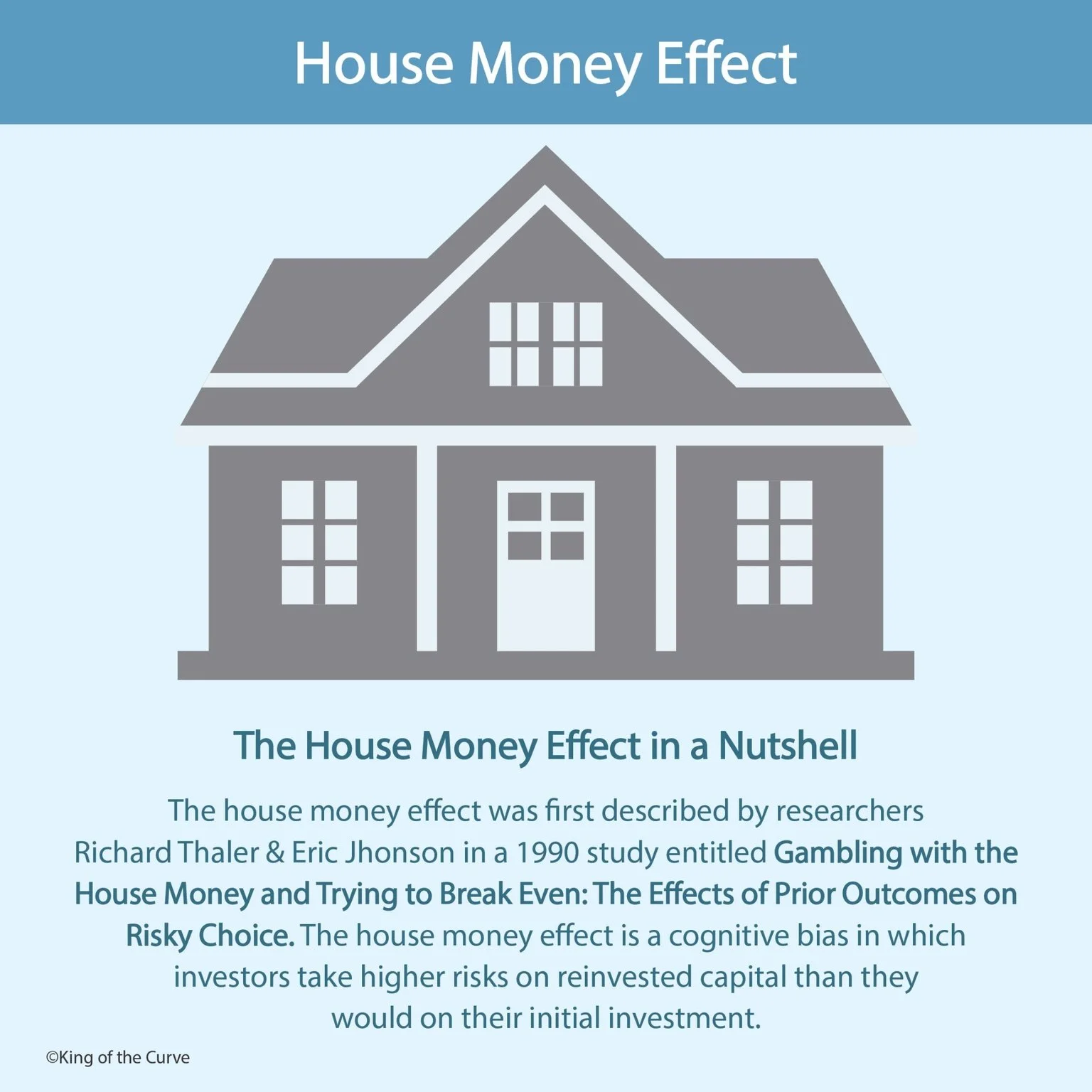🏠💸 The House Money Effect: Why “Winning” Makes Us Riskier
The house money effect is a classic behavioral economics bias you’ll see in MCAT Psychology/Sociology passages on decision-making, risk, and prospect theory. After a gain, people treat that gain like it’s the casino’s money—so they take bigger risks than they would with their original funds. Knowing how this shows up in vignettes (investing, clinical choices, study behavior) can unlock easy points.
🧠 What is the House Money Effect?
Definition: A cognitive bias in which people are more willing to take risks with recent gains than with their original capital.
Why it happens: Mental accounting (segregating money into “accounts”), diminishing sensitivity, and the feeling that “it’s not my hard-earned money.”
Prototype vignette: An investor profits $1,000, then buys a riskier option because the profit “came from the market anyway.”
📚 MCAT Lens (with buzzwords)
Prospect Theory, reference points, mental accounting, risk seeking after gains, framing effects.
Common stem language: “after a windfall…,” “using winnings…,” “reinvests profits more aggressively than principal,” “treats the bonus differently from salary.”
🩺 NCLEX/Clinical Angle
Patients or clinicians may treat rebates, stipends, or lottery winnings differently than regular income, affecting medication purchases, preventive care, or lifestyle choices.
Health-system vouchers/credits can nudge behavior; understanding mental accounting helps design better adherence interventions.
📊 Quick Compare: Don’t Confuse These Biases
Paste-ready table for your post. Ask if you want the combined HTML/CSS version.
| Bias | One-Line Definition | Hallmark Stem | Biggest Trap |
|---|---|---|---|
| House Money Effect | Risk increases when wagering recent gains | “She invests her winnings in a risky startup.” | Confusing with break-even effect |
| Loss Aversion | Losses loom larger than equal gains | “Avoids a bet with 50/50 ±$100.” | Thinking it predicts more risk after gains (it doesn’t) |
| Sunk Cost Fallacy | Past, irrecoverable costs drive current choices | “Keeps the class because it was paid for.” | Treating future gains/losses the same as sunk costs |
| Break-Even Effect | Takes risk to recoup prior losses | “Doubles down to get back to even.” | Different from risking gains (house money) |
| Gambler’s Fallacy | Belief outcomes will self-correct | “After 5 reds, black is due.” | Not about accounts or risk with gains |
📝 Mini MCAT-Style Checks
A student wins a $500 research prize and buys speculative crypto with it, but would never touch savings. Which bias? → House money effect.
A resident keeps attending an expensive prep course she hates “because I paid for it.” → Sunk cost fallacy.
A patient loses $200, then buys a risky scratch-off to recover it. → Break-even effect.
🧩 Exam Tips
Look for the reference point. If the money is profit/winnings, think house money. If it’s losses, think break-even.
When the stem emphasizes past payment affecting present choices, that’s sunk cost.
If the passage highlights probability misconceptions (“due to win”), it’s gambler’s fallacy.
🚀 Keep climbing the curve
Warm up daily with Question of the Day
Learn with visuals at Study Science
Try Free Lifetime or book trial sessions
New to pre-med? Start with Pre-Med Essentials
Frequently Asked Questions (FAQs)
-
Aim for 4-6 focused hours, ensuring you incorporate breaks to avoid burnout.
-
Practice mindfulness techniques, take practice exams under realistic conditions, and maintain a balanced lifestyle.
-
Set short-term goals, seek support from mentors, and reward yourself for small achievements.
-
Regular exercise improves focus, reduces stress, and enhances overall mental clarity.
-
KOTC offers personalized learning tools, gamification features, and adaptive question banks to help students stay on track without burnout.


